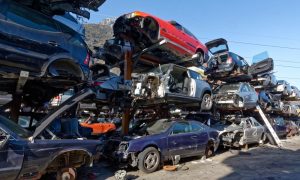
The regulatory framework governing car servicing Singapore reveals a complex web of policies that, whilst ostensibly designed to ensure safety and environmental compliance, has created profound disparities in access to affordable vehicle maintenance across different economic strata of society. Like many well-intentioned systems, Singapore’s approach to automotive regulation demonstrates how bureaucratic structures can inadvertently amplify existing inequalities whilst failing to serve the very communities they claim to protect.
To understand the true impact of Singapore’s car servicing landscape, we must look beyond the sterile language of policy documents and examine how these rules play out in the daily lives of ordinary residents. The story that emerges is one of unintended consequences, where efforts to modernise and regulate have created barriers that disproportionately affect working families whilst benefiting those with greater economic resources.
The Regulatory Maze and Its Victims
Singapore’s stringent vehicle inspection requirements and certification standards were implemented with laudable goals: ensuring road safety, reducing emissions, and maintaining the island nation’s reputation for efficiency and order. However, these same regulations have created a multi-tiered system where access to quality vehicle maintenance increasingly depends on one’s economic position rather than actual mechanical need.
The mandatory periodic inspections, whilst serving genuine safety purposes, have become financial hurdles for families operating on tight budgets. When a vehicle fails inspection, owners face a cascade of potential expenses that can spiral quickly beyond their means. The requirement for certified parts and authorised service centres, though designed to maintain standards, has effectively eliminated many affordable repair options that previously served lower-income communities.
The system’s rigidity creates impossible choices for vulnerable workers:
- Delivery drivers face losing their livelihoods when aging vehicles require expensive certified repairs
- Small business owners must choose between compliance costs that exceed vehicle values or losing registration
- Low-income families cannot access affordable repair options due to certification requirements
- Elderly vehicle owners find themselves priced out of maintaining older but functional cars
The Geography of Access and Exclusion
Singapore’s physical constraints have created additional layers of inequality within the car servicing ecosystem. Authorised service centres cluster in industrial estates and commercial districts, often far from the residential areas where working families live. This geographical mismatch creates hidden costs—lost wages from time off work, transportation expenses to reach service centres, and the inconvenience of arranging alternative transport during repairs.
The concentration of approved facilities has also reduced competition in meaningful ways. When only certified workshops can perform certain services, market forces that might otherwise drive down prices are effectively neutered. Customers become captive to whatever pricing structures these authorised providers establish.
Essential services affected by these dynamics include:
- Mandatory safety inspections– Required but expensive, with limited provider options
- Emissions testing and compliance– Critical for registration renewal but geographically concentrated
- Brake and steering system maintenance– Safety-critical work requiring certified technicians
- Electronic diagnostic services– Increasingly necessary but expensive and specialised
- Warranty-compliant repairs– Required for newer vehicles, but limiting repair options
The Professional Class Advantage
Those with steady employment, flexible schedules, and disposable income navigate Singapore’s car servicing requirements with relative ease. They can afford regular preventive maintenance that helps avoid costly emergency repairs. They have the luxury of time to research options, compare prices, and schedule services at their convenience.
For professional-class vehicle owners, the regulatory system works largely as intended. Their vehicles remain reliable, safe, and compliant. They may grumble about costs, but these expenses rarely threaten their fundamental mobility or economic stability.
This creates what we might call a “mobility privilege”—the ability to maintain reliable transportation without financial stress, which in turn enables continued economic opportunity and stability.
Unintended Consequences and Community Impact
As one automotive policy researcher observes: “Singapore’s car servicing regulations have created a perfect storm where good intentions meet economic reality. The system works brilliantly for those who can afford it, but systematically excludes those who need affordable transport the most.”
The cumulative effects create cascading problems across communities:
- Deferred maintenance leads to genuine safety risks as families postpone necessary repairs
- Vehicle abandonment limits employment options and economic mobility for working families
- Unauthorised repairs emerge as desperate alternatives, potentially creating the safety problems regulations aimed to prevent
- Economic exclusion forces some residents out of vehicle ownership entirely, limiting life opportunities
The system thus fails on its own terms whilst imposing disproportionate burdens on vulnerable populations.
Reform and Recognition
Addressing these inequities requires acknowledgement that technical compliance and social equity need not be mutually exclusive. Other jurisdictions have developed tiered inspection systems, sliding-scale fees, and community-based service programmes that maintain safety standards whilst reducing barriers to compliance.
Singapore could explore innovative equity-focused reforms:
- Income-based inspection fees that scale with household earnings rather than flat rates
- Mobile inspection services bringing compliance testing to underserved residential areas
- Community workshop programmes providing supervised repair opportunities and basic maintenance training
- Tiered certification systems allowing qualified independent mechanics to perform routine services
- Emergency repair funds helping working families manage unexpected compliance costs
Such reforms would require political will to prioritise equity alongside efficiency.
Moving Toward Justice in Mobility Policy
The challenge lies not in abandoning safety standards but in designing systems that achieve legitimate regulatory goals without creating insurmountable barriers for working families. This requires moving beyond technocratic solutions to consider the human impact of policy choices.
True reform would recognise that mobility is not a luxury but a necessity for economic participation in modern Singapore. It would acknowledge that well-intentioned regulations can become instruments of exclusion when they fail to account for economic diversity within the community.
Until policymakers grapple seriously with these equity concerns, Singapore’s approach to vehicle regulation will continue to reflect and reinforce broader patterns of economic inequality, making car servicing Singapore a system that serves some whilst failing others who need it most.





